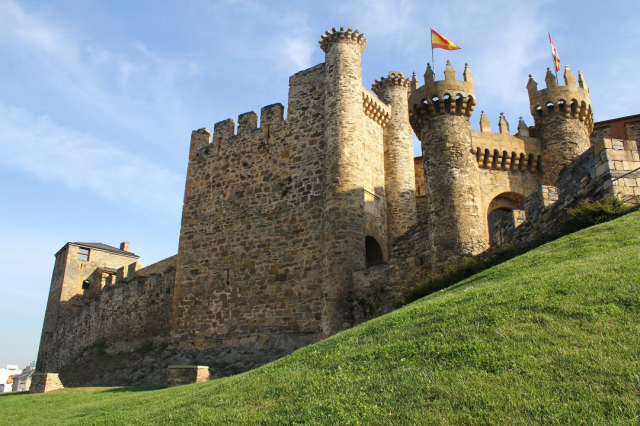The Templars and the Camino de Santiago: Their legacy
Many of the legends make reference to the Camino de Santiago, and one of the most famous has to do with the Templars and their role in this historic journey.
Galicia: One of the territories of the peninsula with more myths and legends.
The Camino de Santiago is an experience that could well be considered a magical journey full of legends, a unique and unforgettable adventure for each of the pilgrims who decide to leave their footprints on the various Jacobean routes. The journey is so special that it is not only characterized by the typical reasons that lead us to go ahead, but also by the history, framework and backdrop that represent each of the routes, which are full of a very special essence.
Galicia is one of the most magical regions of the Iberian Peninsula. In the territory are discovered several myths and legends that have passed from generation to generation. Many of them have to do with the Camino de Santiago, and one of the most famous has to do with the Templars and their role in this historic journey.
Who are the Templars and what is their role in the Camino de Santiago?
It is well known that the Camino de Santiago has its origins thanks to King Alfonso II, nicknamed the Chaste. The king of Asturias promoted the cult of the apostle through the creation of a first route that was developed throughout the twelfth and thirteenth centuries. Due to its popularity among the most devout, thousands of believers walked the route every year to visit the remains of Santiago el Mayor.
The fame and renown of the Camino de Santiago caused both the clergy and the kings of the time to build all kinds of bridges, shelters, hospitals and other amenities to facilitate the pilgrims' long journey. But, according to legend, in addition to all this it was also necessary to provide some security.
This is where the role of the Templars, also known as the 'Order of the Poor Knights of Christ of the Temple of Solomon', comes in. This was one of the most important and powerful Catholic military monastic organizations of the entire Middle Ages, which is why they were selected on the Camino de Santiago to patrol the routes to protect the safety of the pilgrims.
Examples of the presence of the Knights Templar on the Way of St. James
Although this fact is still told today as a simple legend, the truth is that the Camino de Santiago uncovers a number of examples where the presence of the Knights Templar is found. Overall, it is something that has opened the possibility of believing that all the stories told for thousands of years, really are true.
- Church of Santa Maria de Eunate. Some evidence indicates that originally this hermitage located within the municipality of Muruzábal could have had the function of a pilgrims' hospital, since it is directly related to the Order of the Knights Hospitaller of San Juan. There is also the passage of the Knights Templar, since its construction coincides with the physiognomy of other of their works.
- Church of the Holy Sepulchre. In the municipality of Torres del Río in Navarra, the church of the Holy Sepulchre is from the 12th century and of Templar lineage. It stands out for some of its monumental characteristics, such as its octagonal floor plan with eight arches and a cross dome crowning the interior.
- Santa María de la Blanca Church. It is one of the most important and iconic temples linked to the Order of the Temple in the peninsula. Located in Villalcázar de Sirga, in the province of Palencia, the Church of Santa María de la Blanca is considered a World Heritage Site and is associated with the French Way and the Northern Way.
- The Castle of Ponferrada. Several kings have paraded through the Templar Castle of Ponferrada. At first glance it seems to have nothing special and yet it is a destination where all kinds of battles have taken place that made the building an almost impregnable fortress.
Routes
Blog
 ¿Vas a hacer el camino de Santiago? Cuida tus pies antes y después
¿Vas a hacer el camino de Santiago? Cuida tus pies antes y después
 5 razones por las que contratar un seguro de viajes
5 razones por las que contratar un seguro de viajes
 Formas de hacer un logotipo
Formas de hacer un logotipo
 La importancia del registro de llamadas durante tu viaje por el Camino de Santiago
La importancia del registro de llamadas durante tu viaje por el Camino de Santiago
Information
Points of interest
Cities & Towns | Hostels | Lodgings | Restaurants | Saddlery | Doctors | Points of interest | Bikes workshop
Contact us | Privacy policy | Cookies policy | | Terms of use | Authorship | Web Map | Consentimiento
© Copyright LA VOZ DE GALICIA S.A. Polígono de Sabón, Arteixo, A CORUÑA (ESPAÑA) Inscrita en el Registro Mercantil de A Coruña en el Tomo 2438 del Archivo, Sección General, a los folios 91 y siguientes, hoja C-2141. CIF: A-15000649
